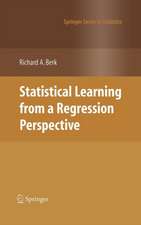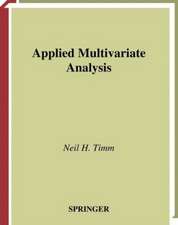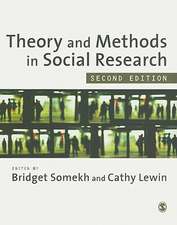The Second Law of Economics: Energy, Entropy, and the Origins of Wealth: The Frontiers Collection
Autor Reiner Kümmelen Limba Engleză Hardback – 28 iun 2011
| Toate formatele și edițiile | Preț | Express |
|---|---|---|
| Paperback (1) | 389.49 lei 6-8 săpt. | |
| Springer – aug 2013 | 389.49 lei 6-8 săpt. | |
| Hardback (1) | 590.16 lei 6-8 săpt. | |
| Springer – 28 iun 2011 | 590.16 lei 6-8 săpt. |
Din seria The Frontiers Collection
-
 Preț: 298.66 lei
Preț: 298.66 lei -
 Preț: 351.90 lei
Preț: 351.90 lei -
 Preț: 297.61 lei
Preț: 297.61 lei - 17%
 Preț: 366.24 lei
Preț: 366.24 lei - 8%
 Preț: 462.91 lei
Preț: 462.91 lei -
 Preț: 308.36 lei
Preț: 308.36 lei -
 Preț: 395.47 lei
Preț: 395.47 lei -
 Preț: 323.05 lei
Preț: 323.05 lei -
 Preț: 215.30 lei
Preț: 215.30 lei -
 Preț: 312.94 lei
Preț: 312.94 lei - 17%
 Preț: 493.43 lei
Preț: 493.43 lei -
 Preț: 381.15 lei
Preț: 381.15 lei -
 Preț: 271.81 lei
Preț: 271.81 lei -
 Preț: 396.40 lei
Preț: 396.40 lei -
 Preț: 208.95 lei
Preț: 208.95 lei - 17%
 Preț: 525.37 lei
Preț: 525.37 lei - 20%
 Preț: 340.49 lei
Preț: 340.49 lei -
 Preț: 225.86 lei
Preț: 225.86 lei -
 Preț: 283.50 lei
Preț: 283.50 lei -
 Preț: 346.61 lei
Preț: 346.61 lei -
 Preț: 270.72 lei
Preț: 270.72 lei - 15%
 Preț: 536.96 lei
Preț: 536.96 lei - 5%
 Preț: 383.93 lei
Preț: 383.93 lei -
 Preț: 500.84 lei
Preț: 500.84 lei -
 Preț: 484.69 lei
Preț: 484.69 lei - 15%
 Preț: 534.82 lei
Preț: 534.82 lei - 15%
 Preț: 481.34 lei
Preț: 481.34 lei - 15%
 Preț: 640.24 lei
Preț: 640.24 lei -
 Preț: 401.79 lei
Preț: 401.79 lei - 15%
 Preț: 595.68 lei
Preț: 595.68 lei -
 Preț: 388.34 lei
Preț: 388.34 lei -
 Preț: 390.63 lei
Preț: 390.63 lei - 15%
 Preț: 478.05 lei
Preț: 478.05 lei - 15%
 Preț: 475.15 lei
Preț: 475.15 lei - 15%
 Preț: 534.36 lei
Preț: 534.36 lei -
 Preț: 389.49 lei
Preț: 389.49 lei -
 Preț: 493.85 lei
Preț: 493.85 lei -
 Preț: 394.29 lei
Preț: 394.29 lei -
 Preț: 459.92 lei
Preț: 459.92 lei
Preț: 590.16 lei
Preț vechi: 694.31 lei
-15% Nou
Puncte Express: 885
Preț estimativ în valută:
112.93€ • 120.76$ • 94.16£
112.93€ • 120.76$ • 94.16£
Carte tipărită la comandă
Livrare economică 17 aprilie-01 mai
Preluare comenzi: 021 569.72.76
Specificații
ISBN-13: 9781441993649
ISBN-10: 1441993649
Pagini: 297
Ilustrații: XX, 296 p. 51 illus., 24 illus. in color.
Dimensiuni: 155 x 235 x 25 mm
Greutate: 0.59 kg
Ediția:2011
Editura: Springer
Colecția Springer
Seria The Frontiers Collection
Locul publicării:New York, NY, United States
ISBN-10: 1441993649
Pagini: 297
Ilustrații: XX, 296 p. 51 illus., 24 illus. in color.
Dimensiuni: 155 x 235 x 25 mm
Greutate: 0.59 kg
Ediția:2011
Editura: Springer
Colecția Springer
Seria The Frontiers Collection
Locul publicării:New York, NY, United States
Public țintă
Professional/practitionerCuprins
Chapter 1: PROLOGUE: Time Travel with Abel
From Big Bang to Sun
Light on Earth
As Life Goes
Fire and Grain
Ancient Empires
Wind Power, Gunpowder and Wood
Industrial Revolution
Golden Age
Outlook
References
Chapter 2: ENERGY
2.1 Understanding the Prime Mover
2.1.1 How the Energy Concept Evolved
2.1.2 Energy for All and Forever
2.1.3 Energy Quantity and Quality
2.2 Sun and Earth
2.2.1 Energy Production in the Sun
2.2.2 The Natural Greenhouse Effect
2.2.3 Solar Activity and Climate
2.2.4 Photosynthesis, Respiration and Food Production
2.3 Amplifiers of Muscles and Brain
2.3.1 Heat Engines
2.3.2 Transistors
2.4 Energy Services
2.4.1 Freedom from Toil
2.4.2 Comfort, Mobility, Information
2.4.3 Political Power
2.5 Consumption - and What is Left
2.5.1 Consumption of Energy Carriers
2.5.2 Reserves and Resources of Fossil and Nuclear Fuels
2.5.3 Renewable Energies
2.5.4 Energy Conservation
2.6 Technological Perspectives
2.6.1 Fission
2.6.2 Fusion
2.6.3 Solar Power from Deserts and Space
2.7 Appendix A: Basic Forms of Energy
2.7.1 System Energies
2.7.2 Work and Heat
2.7.3 Enthalpy and Exergy
2.7.4 Thermodynamic Potentials
2.8 Appendix B: Energy Units References
Chapter 3: ENTROPY
3.1 No Free Lunch
3.2 Equipartition, the Toddler and Entropy
3.3 States of Systems
3.4 The Way Things Change
3.4.1 Driving Towards Disorder
3.4.2 Haste Makes Waste: Irreversible Processes
3.5 Arrow of Time
3.6 Entropy Production and Emissions
3.6.1 Sources and Substances
3.6.2 Anthropogenic Greenhouse Effect
3.6.3 Pollution Control and Heat Equivalents of NOX, SO2, CO2, and Nuclear Waste
3.7 Appendix:Non-equilibrium Thermodynamics and Second Law
3.7.1 Gibbs' Fundamental Equation
3.7.2 Balance Equations
3.7.3 Density of Entropy Production References
Chapter 4: ECONOMY
4.1 Complementary Perspectives on the Economy
4.2 Energy, Entropy and the Growth Paradigm
4.3 Pre-Analytic Vision: The Law of Diminishing Returns
4.4 How Technological Constraints Change Economic Equilibrium
4.4.1 Output Elasticities
4.4.2 Shadow Prices
4.4.3 Appendix 1: Maximizing Profit
4.4.4 Appendix 2: Maximizing Overall Welfare
4.5 The Second Law of Economics
4.5.1 Levels of Wealth Creation
4.5.2 The Technological Constraints on Capital, Labor and Energy
4.5.3 Modeling Production
4.5.4 Economic Growth in German, Japan, and the USA
4.5.5 The Productive Powers of Capital, Labor, Energy, and Creativity
4.5.6 Cointegration
4.5.7 The "Useful Work" Approach
4.5.8 Pollution, Recycling and Perspectives on Growth
4.5.9 Appendix 3: Aggregating Output and Factors in Physical Terms
4.5.10 Appendix 4: Explicit Constraint Equations
4.5.11 Appendix 5: Empirical Data of Output and Inputs
4.5.12 Appendix 6: Determining Technology Parameters
4.6 Distribution of Wealth
4.6.1 Adam Smith's Concepts and Karl Marx' Error
4.6.2 Rich and Poor
4.6.3 Taxes and Debts
4.6.4 Discounting the Future
4.7 Summary and Discussion References
Chapter 5: EPILOGUE: Decisions under Uncertainty
Ethics
Reason
References
GLOSSARY
INDEX
From Big Bang to Sun
Light on Earth
As Life Goes
Fire and Grain
Ancient Empires
Wind Power, Gunpowder and Wood
Industrial Revolution
Golden Age
Outlook
References
Chapter 2: ENERGY
2.1 Understanding the Prime Mover
2.1.1 How the Energy Concept Evolved
2.1.2 Energy for All and Forever
2.1.3 Energy Quantity and Quality
2.2 Sun and Earth
2.2.1 Energy Production in the Sun
2.2.2 The Natural Greenhouse Effect
2.2.3 Solar Activity and Climate
2.2.4 Photosynthesis, Respiration and Food Production
2.3 Amplifiers of Muscles and Brain
2.3.1 Heat Engines
2.3.2 Transistors
2.4 Energy Services
2.4.1 Freedom from Toil
2.4.2 Comfort, Mobility, Information
2.4.3 Political Power
2.5 Consumption - and What is Left
2.5.1 Consumption of Energy Carriers
2.5.2 Reserves and Resources of Fossil and Nuclear Fuels
2.5.3 Renewable Energies
2.5.4 Energy Conservation
2.6 Technological Perspectives
2.6.1 Fission
2.6.2 Fusion
2.6.3 Solar Power from Deserts and Space
2.7 Appendix A: Basic Forms of Energy
2.7.1 System Energies
2.7.2 Work and Heat
2.7.3 Enthalpy and Exergy
2.7.4 Thermodynamic Potentials
2.8 Appendix B: Energy Units References
Chapter 3: ENTROPY
3.1 No Free Lunch
3.2 Equipartition, the Toddler and Entropy
3.3 States of Systems
3.4 The Way Things Change
3.4.1 Driving Towards Disorder
3.4.2 Haste Makes Waste: Irreversible Processes
3.5 Arrow of Time
3.6 Entropy Production and Emissions
3.6.1 Sources and Substances
3.6.2 Anthropogenic Greenhouse Effect
3.6.3 Pollution Control and Heat Equivalents of NOX, SO2, CO2, and Nuclear Waste
3.7 Appendix:Non-equilibrium Thermodynamics and Second Law
3.7.1 Gibbs' Fundamental Equation
3.7.2 Balance Equations
3.7.3 Density of Entropy Production References
Chapter 4: ECONOMY
4.1 Complementary Perspectives on the Economy
4.2 Energy, Entropy and the Growth Paradigm
4.3 Pre-Analytic Vision: The Law of Diminishing Returns
4.4 How Technological Constraints Change Economic Equilibrium
4.4.1 Output Elasticities
4.4.2 Shadow Prices
4.4.3 Appendix 1: Maximizing Profit
4.4.4 Appendix 2: Maximizing Overall Welfare
4.5 The Second Law of Economics
4.5.1 Levels of Wealth Creation
4.5.2 The Technological Constraints on Capital, Labor and Energy
4.5.3 Modeling Production
4.5.4 Economic Growth in German, Japan, and the USA
4.5.5 The Productive Powers of Capital, Labor, Energy, and Creativity
4.5.6 Cointegration
4.5.7 The "Useful Work" Approach
4.5.8 Pollution, Recycling and Perspectives on Growth
4.5.9 Appendix 3: Aggregating Output and Factors in Physical Terms
4.5.10 Appendix 4: Explicit Constraint Equations
4.5.11 Appendix 5: Empirical Data of Output and Inputs
4.5.12 Appendix 6: Determining Technology Parameters
4.6 Distribution of Wealth
4.6.1 Adam Smith's Concepts and Karl Marx' Error
4.6.2 Rich and Poor
4.6.3 Taxes and Debts
4.6.4 Discounting the Future
4.7 Summary and Discussion References
Chapter 5: EPILOGUE: Decisions under Uncertainty
Ethics
Reason
References
GLOSSARY
INDEX
Recenzii
From the reviews:
“The second law of economics by Reiner Kümmel is divided into five chapters. Lots of mathematical expressions, derivations, and interpretations are given which are useful for scientists in this area. This is an interesting book written by a physicist with an interdisciplinary approach suited to the scientific minded as well as non-specialist audience. The author nicely incorporates energy, entropy, and technological concepts into the models of economic development.” (P. N. Rathie, Mathematical Reviews, December, 2013)
“It is no easy task to write a book that is targeted at a broad audience and merges essential concepts of thermodynamics, statistical physics, and economics. However, theoretical physicist Reiner Kümmel succeeds in doing just that with The Second Law of Economics: Energy, Entropy, and the Origins of Wealth. The book discusses the impact of two fundamental laws of nature—energy conservation and entropy production—on the creation and growth of wealth....[The author] argues in a clear and simple way that energy conversion is an essential force in wealth creation and a force to be reckoned with in the crafting of economic policy….
“Overall, The Second Law of Economics is accessible and quite enjoyable, in part because of the subtle ironic tone Kümmel uses in some places. He points out that, for an interdisciplinary field like economic thermodynamics, even PhD scientists can make naive observations….Besides physicists and economists, researchers and policymakers concerned with resource conservation and how a society should be economically organized in the future can benefit from The Second Law of Economics. After all, understanding that law now can help us guarantee the prosperity of future generations.”
--Physics Today, December 2011
“The second law of economics by Reiner Kümmel is divided into five chapters. Lots of mathematical expressions, derivations, and interpretations are given which are useful for scientists in this area. This is an interesting book written by a physicist with an interdisciplinary approach suited to the scientific minded as well as non-specialist audience. The author nicely incorporates energy, entropy, and technological concepts into the models of economic development.” (P. N. Rathie, Mathematical Reviews, December, 2013)
“It is no easy task to write a book that is targeted at a broad audience and merges essential concepts of thermodynamics, statistical physics, and economics. However, theoretical physicist Reiner Kümmel succeeds in doing just that with The Second Law of Economics: Energy, Entropy, and the Origins of Wealth. The book discusses the impact of two fundamental laws of nature—energy conservation and entropy production—on the creation and growth of wealth....[The author] argues in a clear and simple way that energy conversion is an essential force in wealth creation and a force to be reckoned with in the crafting of economic policy….
“Overall, The Second Law of Economics is accessible and quite enjoyable, in part because of the subtle ironic tone Kümmel uses in some places. He points out that, for an interdisciplinary field like economic thermodynamics, even PhD scientists can make naive observations….Besides physicists and economists, researchers and policymakers concerned with resource conservation and how a society should be economically organized in the future can benefit from The Second Law of Economics. After all, understanding that law now can help us guarantee the prosperity of future generations.”
--Physics Today, December 2011
Textul de pe ultima copertă
Nothing happens in the world without energy conversion and entropy production. These fundamental natural laws are familiar to most of us when applied to the evolution of stars, biological processes, or the working of an internal combustion engine, but what about industrial economies and wealth production, or their constant companion, pollution? Does economics conform to the First and the Second Law of Thermodynamics? In this important book, Reiner Kümmel takes us on a fascinating tour of these laws and their influence on natural, technological, and social evolution. Analyzing economic growth in Germany, Japan, and the United States in light of technological constraints on capital, labor, and energy, Professor Kümmel upends conventional economic wisdom by showing that the productive power of energy far outweighs its small share of costs, while for labor just the opposite is true. Wealth creation by energy conversion is accompanied and limited by polluting emissions that are coupled to entropy production. These facts constitute the Second Law of Economics. They take on unprecedented importance in a world that is facing peak oil, debt-driven economic turmoil, and threats from pollution and climate change. They complement the First Law of Economics: Wealth is allocated on markets, and the legal framework determines the outcome. By applying the First and Second Law we understand the true origins of wealth production, the issues that imperil the goal of sustainable development, and the technological options that are compatible both with this goal and with natural laws. The critical role of energy and entropy in the productive sectors of the economy must be realized if we are to create a road map that avoids a Dark Age of shrinking natural resources, environmental degradation, and increasing social tensions.
Caracteristici
Reconsiders economics from the perspective of natural laws Shows how energy and its conversion into physical work accounts for most of the growth that mainstream economics attributes to technological progress and related concepts Describes energy needs and options for the future Explores consequences for economic growth and environmental sustainability Includes supplementary material: sn.pub/extras


















